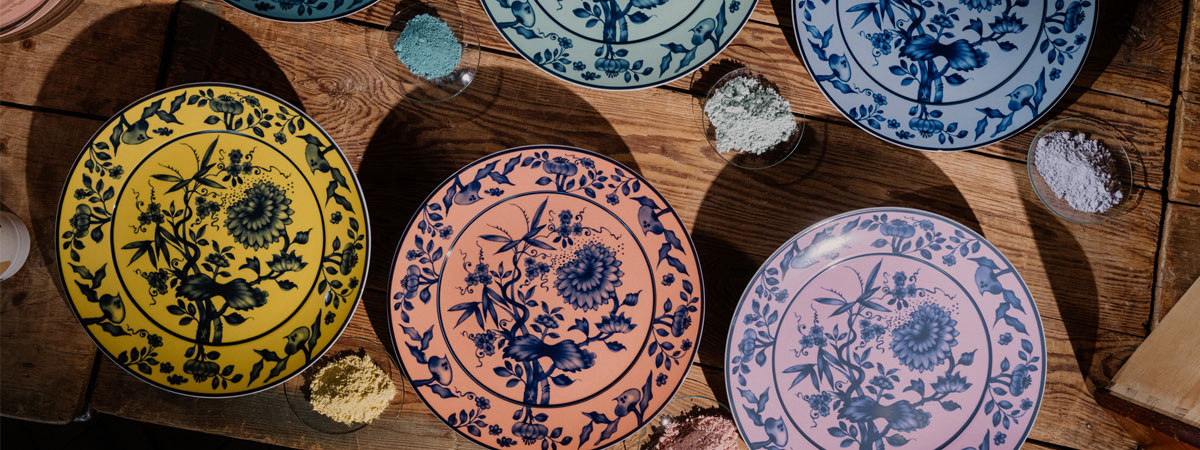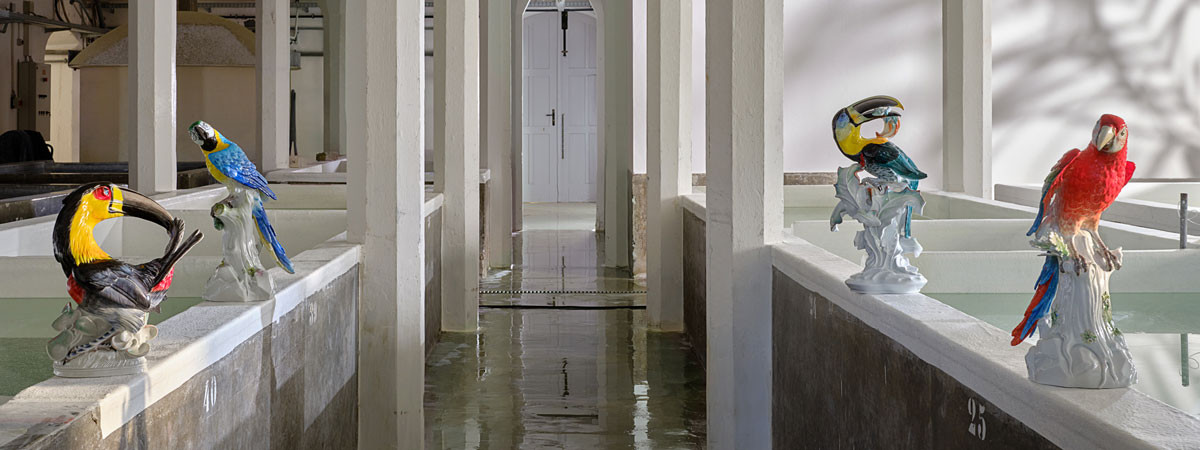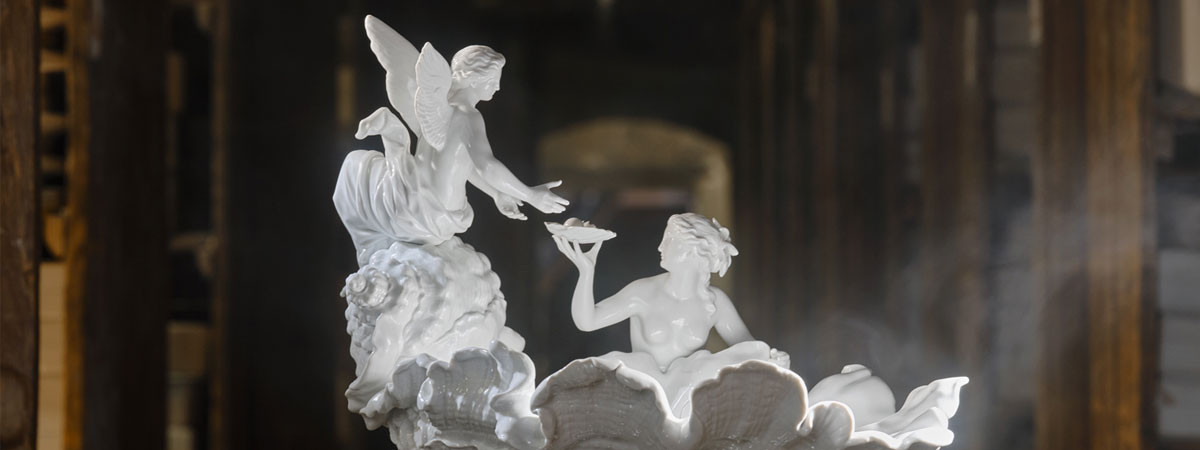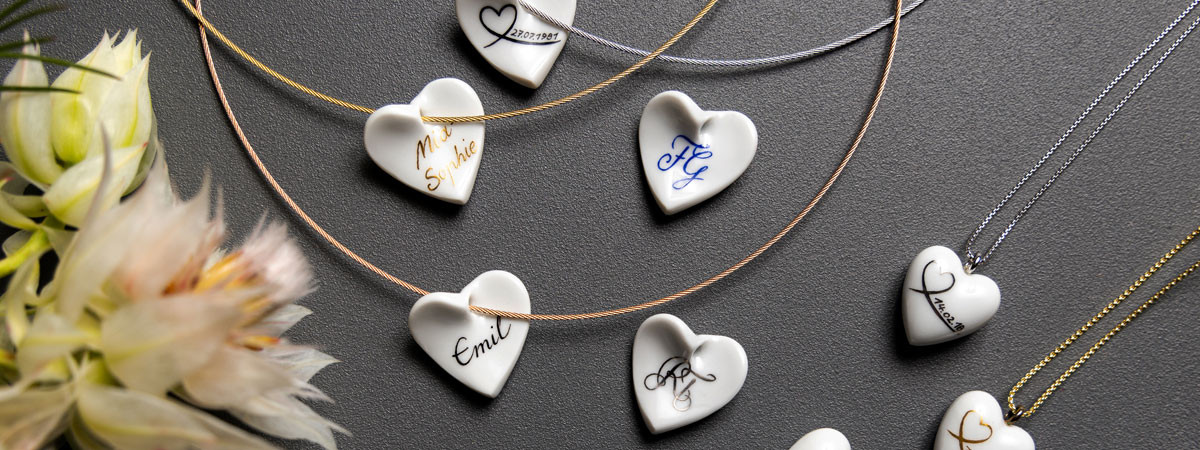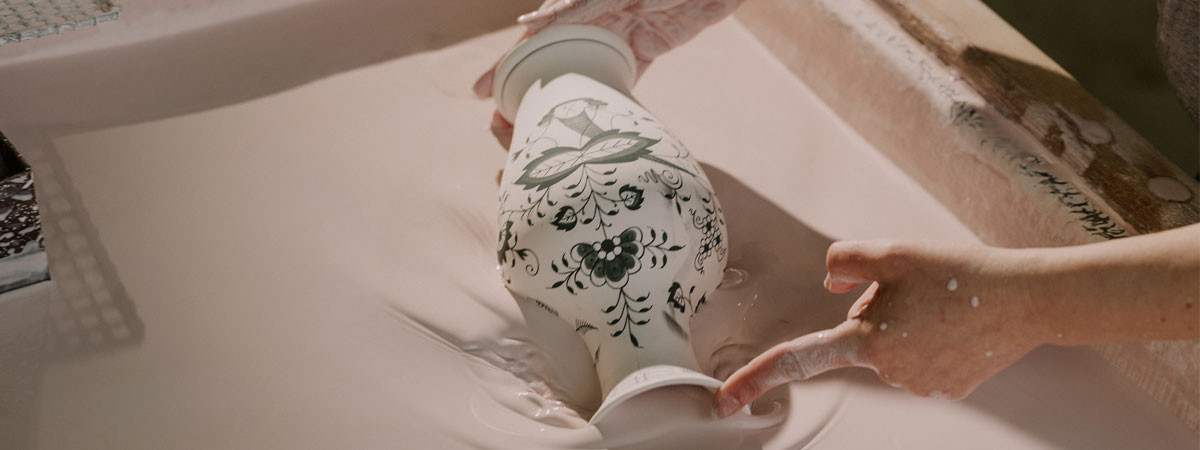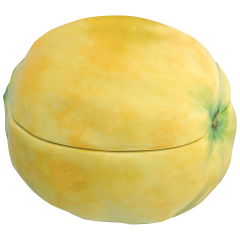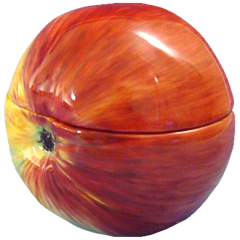Winter Wonders until Feb 28, 2026 with up to 20% off.
Skip to Content
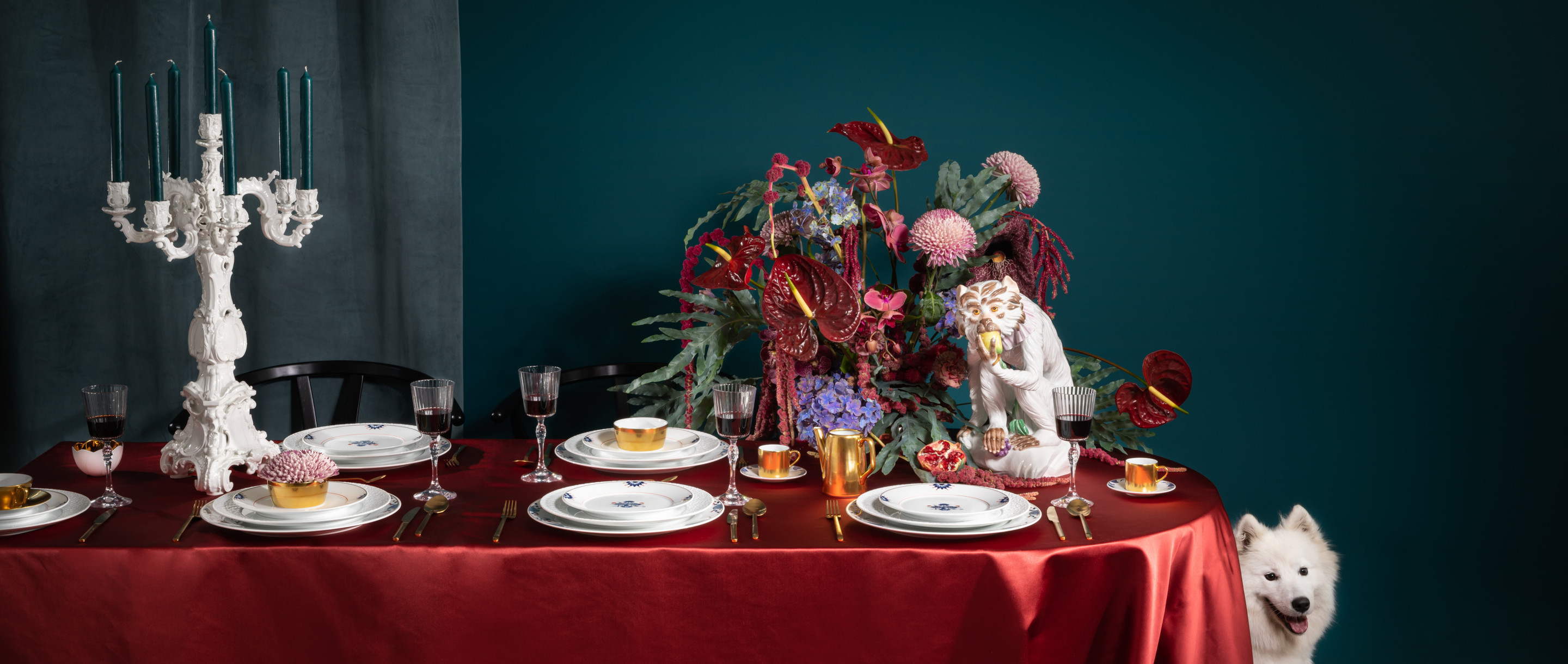
Orangery

While going through the Meissen manufactory archives, Otto Drögsler was struck by a series of Baroque boxes in the form of exotic fruits. Created in the 18th century, the porcelain boxes were part of an elaborate table setting that was intended to demonstrate the wealth and worldliness of the owner, as tropical fruits were considered the height of luxury at this time. As part of the “Orangery” collection, Drögsler has put a modern twist on the original Baroque designs and added two new finishes to the historic, naturalistic decorative pieces: monochrome and glossy gold.
In their naturalistic style, decoration elements merge harmoniously with the highly detailed design of the exterior, its sculpted elements highlighted by the skilled porcelain painters at the manufactory. Conversely, the eye-catching gold gilding boldly arranged on the all-white background lends these historic designs a modern feel and elevate them to works of art. For the monochrome finish – a novelty amongst Meissen’s decorative collections – each box is sprayed by hand in order to achieve an even, matte finish. The objects in the collection are designed so that they can be displayed as a coherent group, as individual pieces, or mix and matched between decorative styles. With his modern reinterpretation of a classic Meissen creation, Otto Drögsler brings Baroque into the 21st century in order to produce timeless interior décor.
-
Array
(
[category_two_mirror_image] => thinkideas/meissencategory/twoMirrorImage/m/e/meissen_porzellan_kollektion_home-deco_orangerie_02_1.jpg
[category_two_mirror_image_title] =>
[category_two_mirror_image_description] => The fact that exotic fruits were immortalized in porcelain attests to their importance in 18th- and 19th-century European society. Given the high cost of importing these fruits and the long journey that the fruit would have to undertake, which often resulted in spoilage, the European aristocracy began constructing greenhouses on their properties in order to grow these fruits for themselves. These buildings were known as orangeries or pineapple houses. In that era, tropical fruits were primarily status symbols, and considered the ultimate luxury. As part of an elaborate table setting, they were rarely eaten with the meal, but rather used again and again until they began to spoil. Remodelled in porcelain, these exotic fruits may have left their perishability behind, but they have retained their representative character all the way into the 21st century.
[category_two_mirror_image_btntext] => Shop now
[category_two_mirror_image_link] => https://www.meissen.com/en/web-produkte/home-deco.html
[category_two_mirror_image_position] =>
)
-
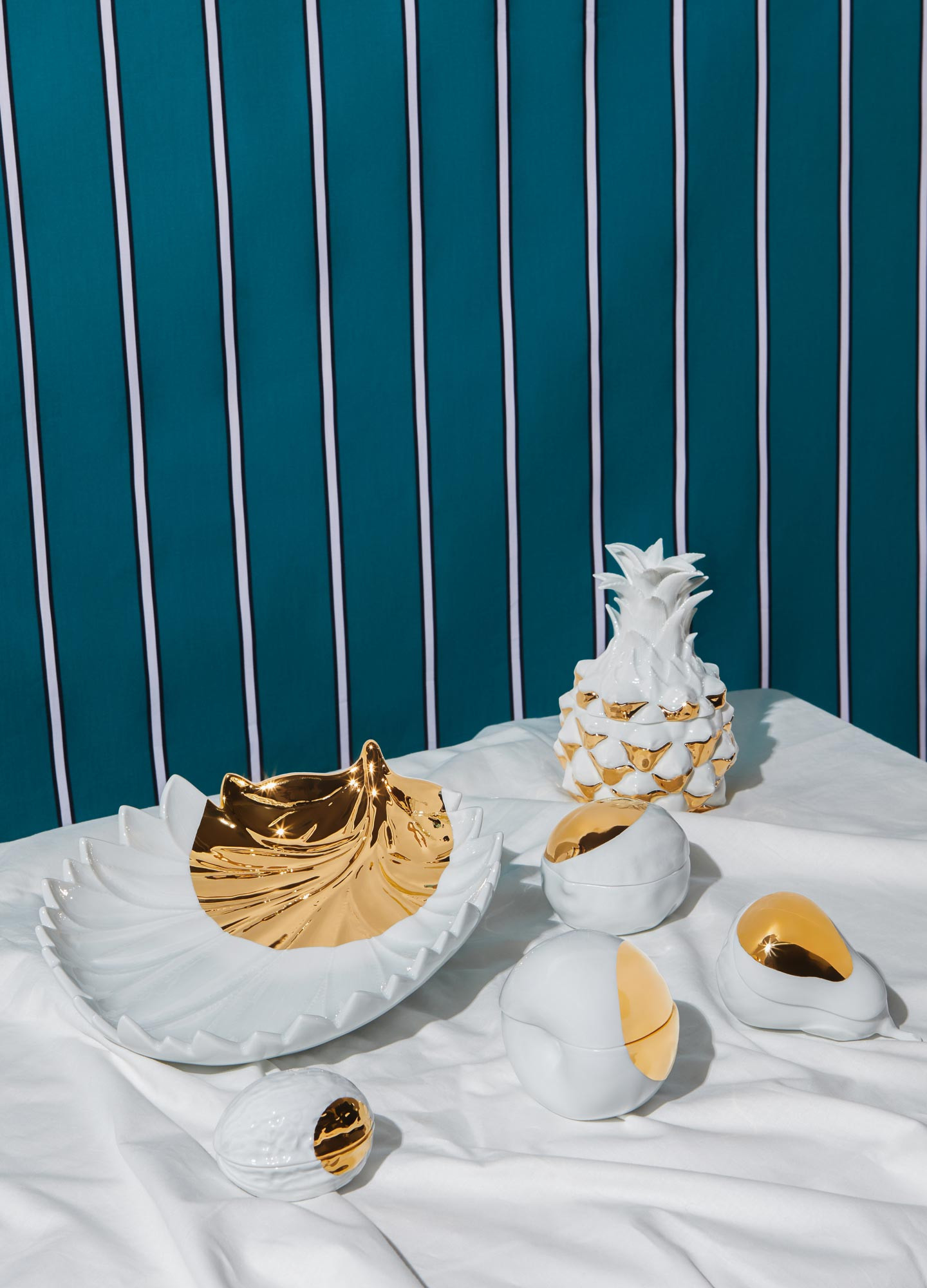 The fact that exotic fruits were immortalized in porcelain attests to their importance in 18th- and 19th-century European society. Given the high cost of importing these fruits and the long journey that the fruit would have to undertake, which often resulted in spoilage, the European aristocracy began constructing greenhouses on their properties in order to grow these fruits for themselves. These buildings were known as orangeries or pineapple houses. In that era, tropical fruits were primarily status symbols, and considered the ultimate luxury. As part of an elaborate table setting, they were rarely eaten with the meal, but rather used again and again until they began to spoil. Remodelled in porcelain, these exotic fruits may have left their perishability behind, but they have retained their representative character all the way into the 21st century.
The fact that exotic fruits were immortalized in porcelain attests to their importance in 18th- and 19th-century European society. Given the high cost of importing these fruits and the long journey that the fruit would have to undertake, which often resulted in spoilage, the European aristocracy began constructing greenhouses on their properties in order to grow these fruits for themselves. These buildings were known as orangeries or pineapple houses. In that era, tropical fruits were primarily status symbols, and considered the ultimate luxury. As part of an elaborate table setting, they were rarely eaten with the meal, but rather used again and again until they began to spoil. Remodelled in porcelain, these exotic fruits may have left their perishability behind, but they have retained their representative character all the way into the 21st century.
“For ‘Orangery’, Otto Drögsler has created contemporary decor elements that combine Baroque opulence with graphical candour.”

